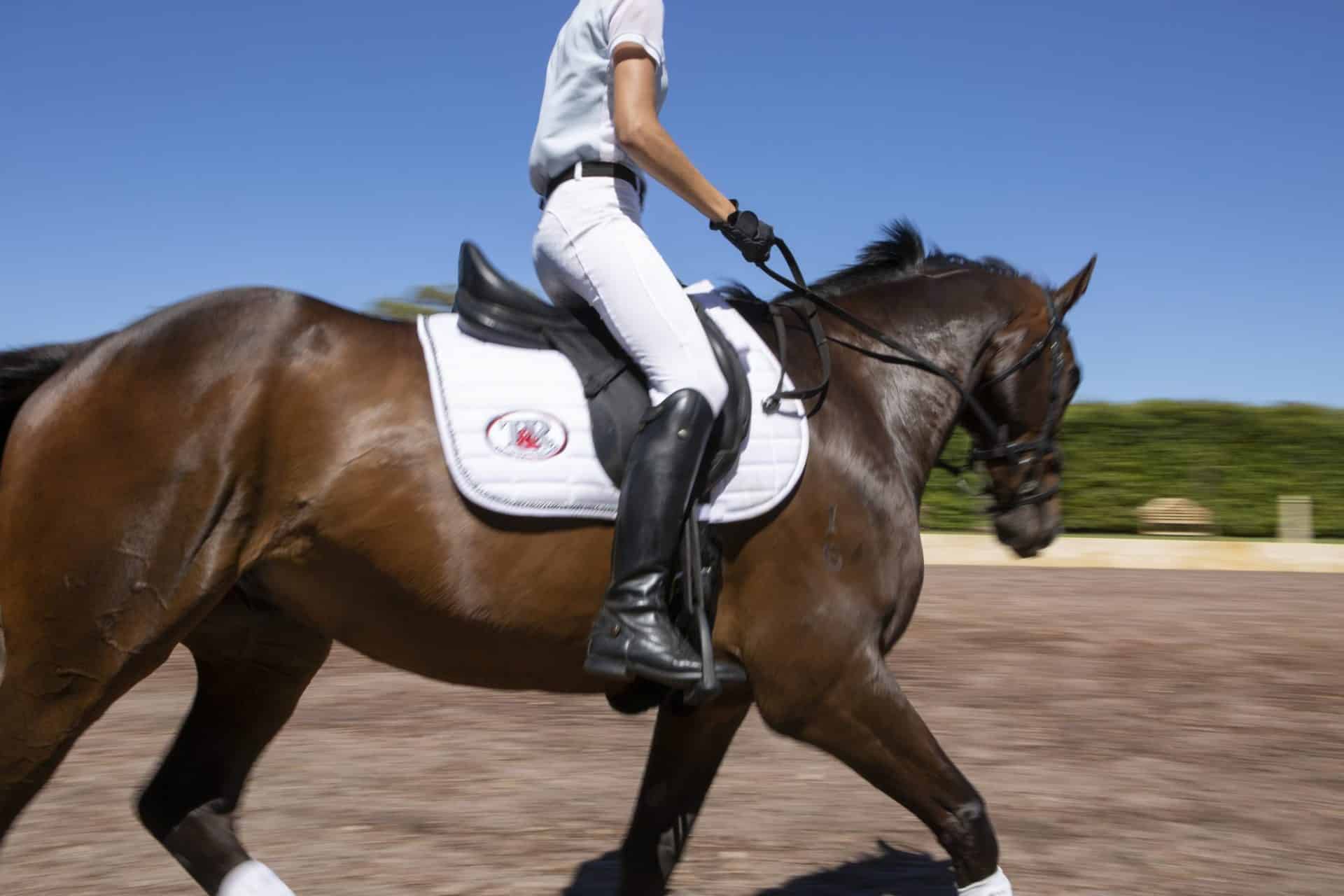
08 Jun Timing Your Horse’s Feeds around Rides
By Jill Davies, Equine Nutritionist
Getting the timing of your horse’s feeds right can optimise digestion, promote gut health, and avoid digestive issues like ulcers. We’ve probably all been told at some time or other not to feed immediately before or after you ride your horse. Research has also shown that your horse shouldn’t have an empty stomach either. It can be difficult to know exactly what is right, and to balance your daily schedule to fit in riding and feeding and everything else in between.
So, how long should you wait between feeding and riding, or riding and feeding? Our nutritionist Jill Davies breaks it down for us.
Riding after you feed
If you want to ride your horse after they have had a hard feed you should wait approximately 1 hour and up to 4 hours, depending on what is in your feed, and how hard they will work. And, if they are going to do strenuous exercise, you should wait to ride for between 4 to 5 hours after feeding.
Why?
- Riding too soon after a hard feed can cause the feed to sit in the small intestine where it does not get absorbed properly. It then moves to the hindgut and produces lactate loving bacteria – aka the bad guys!
- If they have had a large feed, there is less room in the abdominal cavity for their lung capacity
- During exercise, blood flow gets diverted away from the digestive system to support the exercise, which then slows down digestive efficiency – and this can be a colic risk.
Riding after you feed - the impact of grain
The inclusion of grain in feed is one of the main reasons to give your horse time to digest their feed properly before they are ridden.
You should avoid feeding grain and any feed high in starches and sugars within 4 to 5 hours before a ride or exercise.
Why?
- Starches and sugars in these feeds are absorbed from the small intestine mostly as glucose, which triggers the release of insulin from the horse’s pancreas.
- Blood glucose and insulin levels following a grain feed generally peak approximately 2 to 3 hours following a meal and return to normal within 4 to 5 hours. hence why it is wise to wait until then to do a big body of work.
- If you have ever watched a horse in the paddock approx. two hrs after a hard feed, they will go and have a snooze – it makes them sleepy – this is the feed being absorbed in the Small Intestine.
If there is insulin in a horse’s blood when exercise starts, the horse isn’t able to mobilise glucose stores to burn and fuel the muscles during work. This is because insulin is there and is telling the muscles to store all the glucose away.
The horse’s ability to burn fat as an energy source is also reduced when insulin is present. The result of feeding a grain or high starch and sugar feed too close to when the horse is exercised is the horse will run out of muscle energy supplies and fatigue quickly.
This is particularly important for high intensity exercise where a horse’s glucose supplies are burnt up very quickly.
In endurance-type activities, large grain meals should not be fed within 4 to 5 hours prior to the start of exercise, however smaller grain meals may be fed during exercise to top up muscle glycogen stores and prolong the time to fatigue.
Feeding after you ride
If it works for you to feed your horse after a ride, you can give your horse a hard feed within 1 hour of finishing work. Allow them to cool down and their respiration/pulse rate to return to normal.
Why?
- The gut will be better able to take the glucose from the starch and move it into the muscle as a fuel source – topping up the glycogen stores.
- The fibre will move more efficiently into the hindgut for correct fermentation to produce volatile fatty acids for muscle fuel.
Why shouldn't a horse be worked on an empty stomach?
If your horse does not have full-time access to hay or pasture, before you work them it is wise to give them a small portion of lucerne hay or chaff or meadow hay. This is so that they have something in their stomach to protect it from the stomach acid.
Why?
- A small portion of forage like lucerne or meadow hay creates an acid cap in the stomach. This stops any stomach acid from splashing into the non-glandular portion of the stomach.
- This is also why we suggest that feed volumes only fill 2/3 of the stomach, to keep feed below the line where the 2 glandular and non-glandular portions meet to keep the feed where the acid is digesting the feed
- This is especially important to horse’s prone to ulcers.
But how much should I feed them?
Well it all depends on how much time has passed since their last access to forage, like grass or hay. You can use the table below as a guide:

Following this guide will help prevent the acid from splashing up and into the non- glandular section of the stomach. The fibre combines with the saliva from chewing and forms what we call an acid cap. An acid cap keeps the hydrochloric acid secreted for digestion in the glandular section of the horse’s stomach, where it is supposed to be. This will help keep your horse’s stomach healthy & reduce the incidence of gastric ulcers.
In Summary
- If riding after you feed: Wait between 1-4 hours to ride after feeding your horse a hard feed.
- If riding after you feed: Wait 4-5 hours to ride after feeding if your horse will be doing strenuous or endurance-type exercise, or has a feed high in grain, starch and sugars.
- If feeding after your ride: Feed within an hour of finishing work.
- Don’t let your horse work on an empty stomach
- If no full time access to forage or hay, feed lucerne or meadow hay to create an acid cap in their stomach.



Pingback:Win a Winter Prize Pack and 1 Month's Supply of Feed - Thompson and Redwood
Posted at 11:50h, 09 July[…] easy to enter, simply read the Terms and Conditions and fill out the form below telling us what is your favourite Thompson & Redwood product, and […]